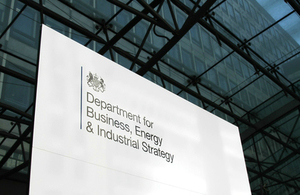New Emissions Trading System proposal would see UK go further in tackling climate change
New UK system to replace EU system for trading carbon emissions

The UK Government is increasing the country’s climate ambitions through new proposals published today showing how a new UK-wide Emissions Trading System (ETS) would work – putting a cost on carbon pollution to encourage polluters to reduce the amount of greenhouse gases they emit.
The system – designed by the UK Government jointly with the Scottish Government, Welsh Government and Northern Ireland Executive – would be a crucial step towards achieving the UK’s target for net zero carbon emissions by 2050. It includes plans to reduce the existing emissions cap by five per cent, going further than the current EU system.
The new scheme would replace the EU Emissions Trading System, which the UK will leave at the end of this year as the transition period ends. The system draws on the best of the current system that the UK helped to develop while ensuring it has greater flexibility to work in the best interests of the UK.
Once a new system is up and running the government intends to go even further by amending the cap again in line with its net zero target.
Energy Minister Kwasi Kwarteng:
The UK is a world-leader in tackling climate change, and thanks to the opportunities arising as we exit the transition period, we are now able to go even further, faster.
This new scheme will provide a smooth transition for businesses while reducing our contribution to climate change, crucial as we work towards net zero emissions by 2050.
Elements of the new Emissions Trading System will be familiar to operators and is designed to ensure a seamless transition at the end of the year.
Emissions trading systems work by setting a cap on the total amount of greenhouse gases that can be emitted from certain sectors – in the UK’s case by energy intensive industries such as steel, the power generation sector and aviation. The cap is reduced over time so that total emissions fall.
After each year, every covered company must surrender enough carbon allowances – each representing tonnes of carbon dioxide – to cover all its emissions, or additional fines of up to £100 per allowance are imposed. Carbon allowances can be bought at auction and traded, and these markets determine their cost (the ‘carbon price’).
Around a third of UK emissions and around 1,000 UK factories and plants are currently covered by the EU ETS and will continue to be covered by the UK system.
The approach to free allocation of allowances under the new system will be consistent with what operators will expected under the EU ETS.
The UK would be open to considering a link between a UK ETS and the EU ETS, if it suits both sides’ interests. This is subject to the ongoing trade negotiations between the UK and EU. In any event, the UK has robust domestic carbon pricing options including these emissions trading system proposals, or a Carbon Emissions Tax.